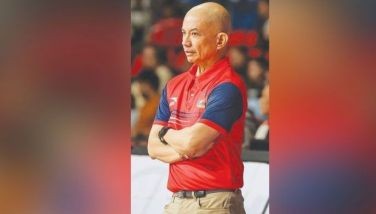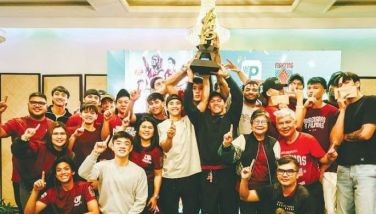BFAR to showcase energy solutions for fisherfolk
Coming to the rescue of fisherfolk reeling from high fuel prices, the Bureau of Fisheries and Aquatic Resources (BFAR) has come out with various energy solutions that will be showcased at Agrilink, Foodlink and Aqualink 2008 on Oct. 9-11 at the World Trade Center Metro Manila.
These energy solutions, according to BFAR Director Malcolm Sarmiento, include the use of sails for fishing boats, windmills for water pumps, biofuels for engines, rented cages for fish farming, and urban aquaculture, among others.
“We advise fisherfolk to use sails in going to the fishing grounds; and use their engines only after catching fish, or when they’re on their way back to the port. This would mean 50 percent savings in fuel,” Sarmiento explained.
The use of sails in fishing boats declined with the introduction of diesel engines, which were relatively cheap and, thus, cost-efficient at that time. But the surge in world oil prices hovering above $100 a barrel makes the uses of sails a practical and attractive solution.
Similarly, BFAR is promoting the use of windmills to generate power for water pumps. This developed after fishpond owners in Bulacan and Pampanga had sought BFAR’s help in addressing the high cost of fuel. It now costs an average of P15,000 worth of fuel to pump water into a one-hectare fishpond.
“We are also promoting the use of biofuels for engines and we are now experimenting on the correct mix,” Sarmiento added.
These technologies will be prominently exhibited at Agrilink by BFAR, including its programs that promote the fisherfolk’s shift from fish hunting to fish farming through a project called “Cages for Rent.”
“We are teaching the most vulnerable sector – the marginal fishermen – to be able to adapt to changing conditions. One of them is to shift from hunting to farming to fish culture in marine cages. We are also teaching them new trades because scientists say that the effects of climate change would be mostly on the wild. So we’re already preparing the fishermen because scientists also agree that they are the most vulnerable sector under climate change,” Sarmiento explained.
Sarmiento’s advocacy also endorses the use of fish aggregating devices. “I believe that fisherfolk would consume less fuel once they know exactly where to fish. We have put up payaws and other fish aggregating devices in the fishing grounds so catching fish would be easier,” Sarmiento pointed out.
Another BFAR project, Urban Aquaculture, will be launched at Agrilink. “We are launching Urban Aquaculture in coordination with NGOs like Vitarich, the cooperatives, and the local government of Quezon City, so the household beneficiaries would at least have fish on their tables when they need it,” Sarmiento said.
The project also involves the breeding and growing of pangasius, and imported food fish that can be propagated and grown locally.
Thus, BFAR will also exhibit live animals and conduct seminars at Agrilink, Foodlink, and Aqualink, the country’s biggest and most prestigious annual international trade show on agribusiness, food and aquaculture. Inquiries can be made with the Foundation for Resource Linkage and Development (FRLD) through tel. 8384549, 8384852, fax 8384573 or email [email protected].
BFAR’s exhibits will be arrayed with those of hundreds of local and foreign companies and institutions participating in this event, which is widely regarded as an international trade festival of the agribusiness industry.
Organized by the FRLD and backed by ABS-CBN as media partner, Agrilink, Foodlink and Aqualink 2008 are supported by the Department of Agriculture, National Agricultural and Fishery Council, BFAR, French Chamber of Commerce in the Philippines (Le Club), and 20 major national trade associations.
- Latest




























